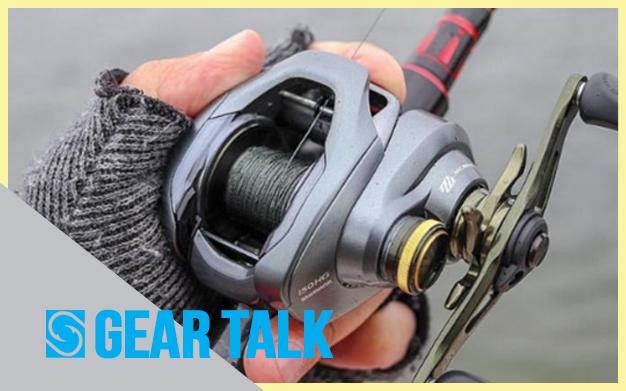The Northshore's Premier Outfitter
Your cart is currently empty
By: Capt. JP Morel

Gear ratios of fishing reels are not exactly a hot topic of conversation around the campfire or the office water cooler, but if you’re looking to refine some fishing techniques, it’s something to look into. It seems pretty straightforward at first glance, a 6.4:1 is faster than a 5.1:1, and a 3.2:1 is really slow. Simple, isn’t it. Hold on a minute, what if the spool size is different, and does that make a difference. The short answer is it does. A more accurate measure is how many inches of line is taken in per turn of the handle as a lower gear ratio reel with a slightly larger spool will take in more line per turn than a faster gear ratio. Fortunately, most reel manufacturers include this information in their spec sheets.
When you see a ratio of 6.4:1, it means the spool turns 6.4 times for every one revolution of the reel handle. The speed is determined by the size and number of teeth on the main drive gear, which is up to the engineering department to make that happen. It is also up to those engineers to make all of it work in a housing that is comfortable to hold and fish all day long. With reel speeds up to 10.1:1 now, I’m sure the engineering was a challenge. Back in the day, and I mean 30 to 40 years ago, the choices were much more limited than today. Most baitcasting reels were in the 5.0: 1 range and slower, with spinning reels even slower. You really had to work to get that buzz bait going back then.
As with most items associated with the outdoors, technology kicks in, and improvements are made over time. We now have reel speeds ranging from 4.0:1 up to the aforementioned 10.1: reel from Abu Garcia aptly named the Rocket. When discussing reel speed, we normally refer to baitcaster versions as these offer more choices than spinning reels. Although Penn recently released a higher speed version of their popular Battle series so perhaps the spinning reel crowd will join the speed race giving a whole new platform to argue about, I mean to discuss.
Now that we have all these different speeds to choose from, what do we do with them? While I understand the trend to faster reel speeds, it’s not for every fishing situation, such as throwing big deep diving crankbaits. For those bottom draggers, the lower speed reel with more power and torque is a better choice. Think of them as the 4-wheel drive of the reel world. You’ll work a lot less with a lower-speed reel as opposed to trying to get that crankbait down with the higher-speed versions. Can it be done with the speed demon? Of course, it can, but it’s going to be more work and effort on your part.
Step up to the 6.0:1 to 7.0:1 and slightly above, and you find the workhorse and probably the most common speed of most reels on the market today. Spinnerbait, drop shot, flipping into heavy cover, chunking topwater, and general all-around use is what the medium speed category is best suited for. When pitching those craw worms into brush or dragging a Carolina rig across a creek channel, the lure is in the strike zone for a limited time. A higher speed reel gets that lure back to the boat faster and allows you to get back in the strike zone a little quicker. When fishing jerk baits or topwater, there is a tendency to get a little slack in the line, and a 6.0:1 and above reel helps take up that slack which can sometimes be the difference between a hookup or a swing and a miss. For the average angler, it’s probably not that important, but when one is fishing for a payday, those few extra casts and hookups might be the difference between a payday or a no payday. The old adage of you can’t catch a fish when the lure is out of the water holds true and more casts equal more time in the water.
The high-speed reels are more specialized, and choices among manufacturers are more limited. Where these reels shine is for those folks that love throwing buzz baits, and I’m one of them—nothing like a bass blowing up on a buzz bait or a very angry redfish doing the same. Yes, reds will hit a buzz bait, but that’s another topic for a later discussion. I put the 8.0:1 to 10.0:1 reel in the high-speed burner class best suited for those buzz baits and waking spinnerbaits. For those not familiar with the waking spinnerbait, it’s simply retrieving a spinner bait just below the surface so that it makes a small wake, all made easier with the higher speed reels and a colorado type spinner blade. Aah, spinner blade choices, again another topic for a later date.
For most of us, a reel in that 6.0:1 to 7.0:1 range will suffice for 90% of what we do. You can throw a buzz bait or spinnerbait and even fish shallow running crankbaits with no extra effort. The only application I refuse to compromise on is fishing those deep-running crankbaits. I want a slower, more torque, more power reel for that style of fishing.
We, as outdoorsmen, are faced with a dizzying array of choices of fishing and hunting gear, and personal preference always comes into play. Just remember, it’s easier to slow down a fast reel than speed up a slow reel. Fish what you like and above all have fun.